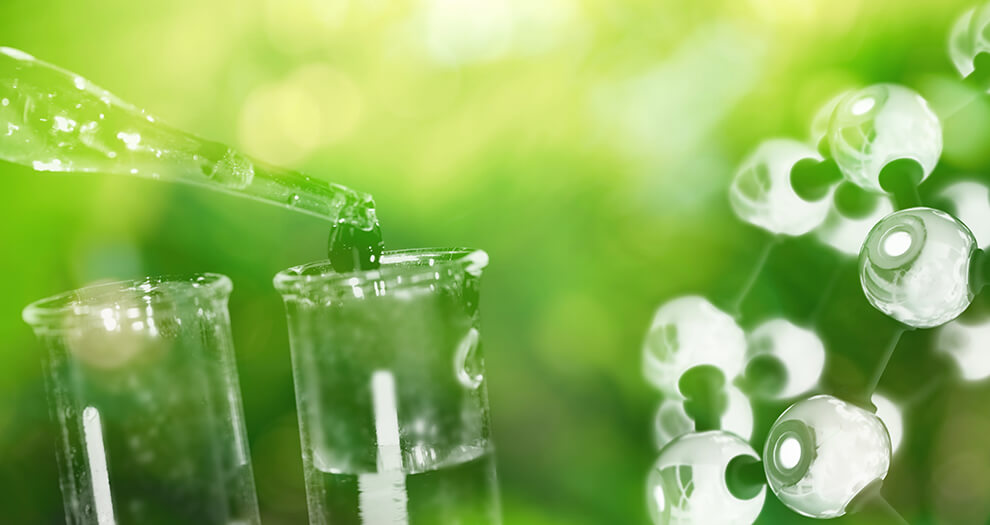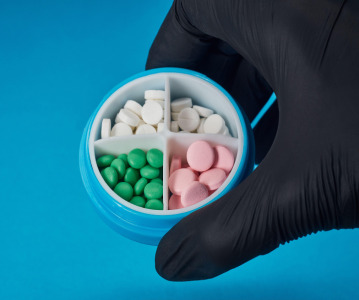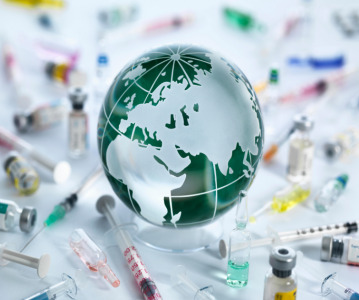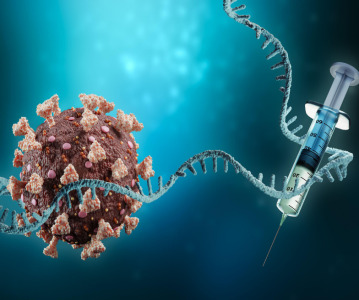Green chemistry: environmental and economic sense for pharma?

The concept of Green Chemistry first arose as a set of principles to minimize the environmental impact of chemical production but as one of its earliest adopters, the pharmaceutical industry has enjoyed several other benefits
The term “green chemistry” was coined in the 1990s to describe the design of products and processes that reduce or eliminate the use and or generation of hazardous substances.
It was first described in “Green Chemistry: Theory and Practice” (1) by Paul Anastas and John Warner as a way of helping industry reduce pollution at source. The book set out principles to help minimize the environmental impact of chemical production and identified fields where green chemistry could be applied, one of which was pharmaceutical production.
More than two decades on and Pharma is not only embracing “green chemistry” for environmental reasons but also because it can make production simpler and faster as well as reduce costs.
Drug firms were among the earliest responders, according to Anastas, currently director of Yale's Center for Green Chemistry and Green Engineering - who says medicine makers’ efforts influenced the wider chemical sector.
“The pharmaceutical industry was one of the earliest sectors to recognize that because of the complexity of its chemistry, it had the broadest range of opportunities through the use of green chemistry,” he says. “The leadership that the pharmaceutical sector showed starting in the 1990s resulted in the forming of the Green Chemistry Pharmaceutical Roundtable. This resulted in many industry sectors following on their lead to advance green chemistry in business by forming their own roundtables.
"The pharmaceutical sector has shown that real synthetic elegance can only be achieved through green chemistry.”
He adds that the green chemistry accomplishments by the pharmaceutical sector thus far have been industry leading and will only be surpassed by their future achievements as they further move into biopharmaceuticals.
Pharma
In recent decades efforts to promote green chemistry have accelerated. For example, in 2006, the European Union introduced the Registration, Evaluation, Authorization and Restriction of Chemicals (REACH) Directive (2) which, among other things, sought to encourage use of sustainable chemical manufacturing processes.
Two years later, in the US, California legislators introduced the Green Chemistry Initiative (3), which also promoted the use of alternatives to hazardous chemicals in industrial manufacturing. Other regulatory measures such as the 2011 Swedish National Pharmaceutical Strategy (4) have also emphasised the need for greater use of green manufacturing processes.
Industry groups have also tried to boost use of green chemistry. In 2005 the American Chemical Society’s (ACS) Green Chemistry Institute (GCI) set up a roundtable (5) to encourage the integration of green chemistry and green in medicine production.
More recently, drug firms themselves have sought to promote green ideas. In June 2020,(6) Sanofi published a call for responsible and chemistry, setting out how it was trying to make its own processes greener.
The French drug maker also shared details of its work with the ACS and other organisations to “catalyze the implementation of green chemistry and engineering throughout the pharmaceutical industry globally.”
Simplification
The desire for simplified, economically efficient processes has also increased the adoption of sustainable methods says James Clark, director of the Green Chemistry Centre of Excellence (GCCE) at York University.
“The drug industry has used clean synthesis principles to minimise the environmental footprint of pharmaceutical manufacturing,” he says, citing use of green principles to minimize and streamline reactions as an example.
“The focus has been minimising the number of process steps and reducing waste, which are probably the biggest problems since many drug syntheses need many steps and each one of those consumes resources and generates waste.”
He adds that Ibuprofen synthesis is often cited as an example where the new greener method avoids some real green chemistry headaches like using stoichiometric aluminium chloride, “although the newer route still has its problems.”
The development of “routes” – chains of chemical reactions that generate the desired product – has been a major application of green chemistry in the pharmaceutical space, Clark says: “The biggest improvements are in new routes that involve many fewer process steps but also specifics such as avoiding stoichiometric oxidants and reductants as well as Friedell Crats acylation stoichiometric catalysts such as aluminium chloride.”
Solvent use
The drug industry’s use of solvents has also decreased as a result of green chemistry, according to Adrian La Porta, chairman of the Institution of Chemical Engineers’ Pharma Special Interest Group.
“Much of the focus in pharmaceutical green chemistry has been on reducing solvent use because solvents represent most of the mass of the chemicals used and ultimately they are not part of the product,” he says. “Traditional organic chemistry has made a lot of use of halogenated solvents because of useful properties but they are particularly damaging to the environment as well as presenting health hazards to workers.”
Industry has employed a variety of approaches to try and eliminate solvents, La Porta says, citing enzymatic processing and intensification as examples.
“The machinery of biosynthesis can perform complex chemistry in aqueous environments, perhaps eliminating several steps. Process intensification including the use of continuous processing can also help here.
“Traditional batch synthesis used in the pharma industry has favoured low temperatures and pressures and dilute solutions - meaning more solvent is used. In contrast intensified, continuous conditions as used in other industries can facilitate better routes and use less material overall.”
If elimination is not possible then substitution is the next best option and again green chemistry is playing a role, La Porta says.
“Green chemistry here needs the chemist to adapt existing routes and reactions using lower impact solvents,” he says. “This has been a goal in chemical development for many years and has included the use of novel solvents and even solid phase chemistry although there has not been much sign of these making to through to full scale production.”
And drug industry efforts to rank solvents by their environmental impact has shaped the wider chemical sector, according to James Clark from York University: “The industry has led the way on producing tables of solvents ranked by their degree of environmental impact and including LCA [life cycle assessment] considerations and also on the development and application of green chemistry metrics that enables proper comparisons between different routes to the same product.”
Cost reduction is another factor driving industry to reduce solvent use. In 2010, the US EPA awarded Merck & Co and Codexis the Greener Reaction Conditions award for a novel production method they developed for the diabetes drug Januvia (sitagliptin).
According to the firms (7), the solvent-free, enzyme-based method resulted in "a 56 percent improvement in productivity with the existing equipment, a 10-13 percent overall increase in yield, and a 19 percent reduction in overall waste generation."
This idea fits with the findings of a 2019 study (8), which suggested economics and corporate positioning were prompting the drug industry to go green.
According to the authors, “Cost savings from GC have become a top driver for some sectors such as the pharmaceutical industry.
Environmental concerns
The next stage of the pharmaceutical sector’s green journey should focus on the drug products themselves, according to Clark.
“The industry needs to embrace the increasing concerns over the environmental impact of drugs,” he explains. “This can mean making them more biodegradable as well as less toxic to the environment. An increasing use of renewable resources including new bio-based platform molecules will also help to show the way to the wider chemical manufacturing industry.”
This idea is in keeping with EU Commission goals for sustainability (9) in the pharmaceutical industry, which included a pledge to support the development of pharmaceuticals that are intrinsically less harmful for the environment and to promote greener manufacturing.
According to the Commission, “The pharmaceutical industry needs to be encouraged to take the environment, from a lifecycle perspective, more into account through the design and manufacturing stages.”
It also suggested the stance could have an impact outside the EU: “Since the industry acts at global level and its actions can have global reach, it makes sense for the Union to ensure a level playing field as regards environmental and health protection across the Union, and to stimulate responsible behaviour also outside the Union.”
Others also suggest pharmaceutical interest in green chemistry is having a wider impact. For example, a study published in the Journal of Cleaner Production in July (10) predicted that there would be a green wave throughout the supply chain.
The authors wrote, “Environmental sustainability has become a central focus of management studies, especially in terms of cleaner production, green supply chain, green materials, and sustainable human resource management.”
The future
The combination of regulatory support and growing understanding of its economic benefits have firmly established green chemistry as a focus for the pharmaceutical industry.
And in future, innovation in production and processing technologies is likely to see industry make even greater use of the approach, says ichemE’s Adrian La Porta: “The use of artificial intelligence and machine learning in increasing the ability to explore and optimise synthesis routes, the pharmaceutical regulators support for process intensification, the use of advanced automation in manufacturing and the ever-increasing pressure to reduce environmental impact may combine to make ‘un-green’ pharmaceutical chemistry a thing of the past.”
References:
- https://www.amazon.com/Green-Chemistry-Practice-Paul-Anastas/dp/0198506988
- https://eur-lex.europa.eu/legal-content/EN/TXT/?uri=uriserv:OJ.L_.2006.396.01.0001.01.ENG
- https://dtsc.ca.gov/green-chemistry/
- https://www.lakemedelsverket.se/4a9855/contentassets/eb3b199cee4e4dd6b4fc6b0006efeccb/the-national-pharmaceutical-strategy-2011-2020.pdf
- https://pubs.rsc.org/en/content/articlelanding/2007/gc/b703488c/unauth#!divAbstract
- https://www.sanofi.com/-/media/Project/One-Sanofi-Web/Websites/Global/Sanofi-COM/Home/common/docs/our-responsibility/documents-center/A-Responsible-and-Sustainable-Chemistry.pdf?la=en
- https://www.epa.gov/greenchemistry/presidential-green-chemistry-challenge-2010-greener-reaction-conditions-award
- https://www.researchgate.net/publication/333178984_The_role_of_drivers_barriers_and_opportunities_of_green_chemistry_adoption_in_the_major_world_markets
- https://eur-lex.europa.eu/legal-content/EN/TXT/PDF/?uri=CELEX:52019DC0128&from=EN
- https://www.sciencedirect.com/science/article/abs/pii/S0959652620312518
Related News
-
News Pharmapack Awards 2024 Patient-Centric Design Award Winner – Dr Ferrer BioPharma
The 2024 Pharmapack Awards celebrated the best in innovation and design for the pharmaceutical packaging and drug delivery industry on January 24, 2024. -
News Pharmapack Awards 2024 - Celebrating Packaging and Drug Delivery Innovation
The 2024 Pharmapack Innovation Awards ceremony celebrated the best in pharmaceutical packaging and drug delivery innovation at all levels. The awards were held on January 24, 2024 at the Paris Expo Porte de Versailles. -
News Women in Pharma: Looking back on 2023 and moving forward to 2024
In this monthly series, we interview women from across the pharmaceutical industry and supply chain to discuss the importance of gender diversity in healthcare, the workplace, and beyond. -
News On track at CPHI Barcelona - The Track Sponsor interview: USP
In our packed out content sessions at CPHI Barcelona this year we focus on some of the hottest topics coming up in the pharma industry, with each track sponsored by a leading expert in the field. -
News Women in Pharma: Marketing for the other half in healthcare
In our new monthly series, we interview women from across the pharmaceutical industry and supply chain to discuss the importance of gender diversity in healthcare, the workplace, and beyond. This instalment highlights not only the importance of ma... -
News Bringing the pharmaceutical supply chain closer to home
The pharmaceutical supply chain has encountered numerous disruptions in the last few years, impacting procurement, manufacturing, packaging, and distribution operations within the pharmaceutical industry. Read about the rise in calls for near/resh... -
News Delivering on mRNA-based therapeutics: innovations in applications and packaging
Since the onset of the COVID-19 pandemic, the innovative potential of mRNA vaccines and therapeutics has raised questions regarding their manufacturing, packaging, and storage/transportation. Learn about how the pharmaceutical supply chain is meet... -
News Your Prescription for Marketing Success: Digital Pharma Marketing Toolkit – Free eBook
Download your FREE pharma marketing eBook to learn why it is so important for pharmaceutical marketeers to develop their digital content marketing strategies in order to establish their companies as thought leaders and industry experts.
Position your company at the heart of the global Pharma industry with a CPHI Online membership
-
Your products and solutions visible to thousands of visitors within the largest Pharma marketplace
-
Generate high-quality, engaged leads for your business, all year round
-
Promote your business as the industry’s thought-leader by hosting your reports, brochures and videos within your profile
-
Your company’s profile boosted at all participating CPHI events
-
An easy-to-use platform with a detailed dashboard showing your leads and performance







